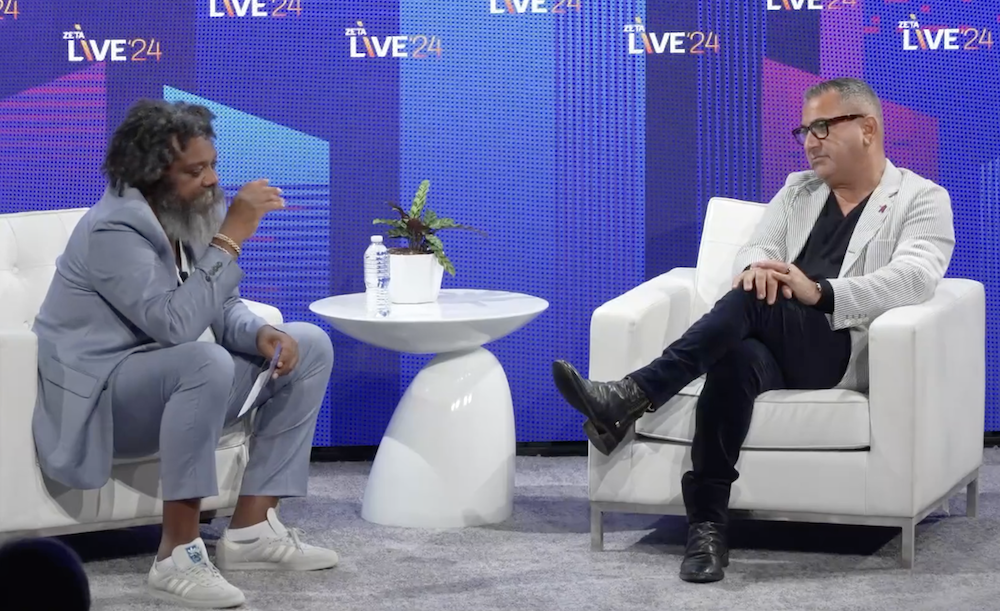The pandemic changed how a lot of companies do business. In McDonald’s’ case, supply chain disruptions forced the brand to cut several food items from its menu, among other efficiencies. But the setback turned out to be a blessing in disguise from a marketing standpoint, according to Tariq Hassan, Chief Marketing and Customer Experience Officer for McDonald’s U.S., because it allowed the quick serve restaurant to regain confidence as a brand.
Hassan traces the shift back to a specific marketing campaign, in fact: Travis Scott’s Famous Order, a collab with the rapper that highlighted his favorite McDonald’s order, resulting in the doubling of Quarter Pounder sales in the campaign’s first week, massive engagement on social and a renewed love for the brand.
“If you look back… [from] 2013 through about 2018, we had forgotten who we were,” said Hassan while speaking at Zeta Global’s conference in New York City last week. “Ironically, COVID woke us up across the operations. It woke us up across supply chain. And as a result of that, it woke us up across reconnecting to what was mattering to the business. Because that supply chain compression forced us to get back to who we were. It forced us to narrow the menu and allow our customers to go, that’s what I actually love about this brand.”
The other piece that transformed the company’s marketing was a technological one. Hassan joined McDonald’s three years ago as it was beginning to prioritize data and technology for driving the business, specifically through launching a loyalty program. In addition to participating in culture in order to build a connection with fans—as it had with the Travis Scott promotion—Hassan challenged his team to put “commerce outcomes and driving the business” top of mind.
Launching Loyalty
Nearly three years in, the McDonald’s loyalty program has amassed 100 million users on the platform, 50% of which are 90-day actives, and has a goal of surpassing 250 million by 2027. The shift has required thinking of the business as a customer platform—through the lens of a quick serve restaurant business.
“That changes an incredible dynamic… even having the dialogue with our franchisees about [the fact that] we are no longer managing physical geographies. We are now managing data geographies and managing data signals and relationships. In four years, we’ve gone from essentially having two channels to now 25 paths to purchase. That’s where it… significantly shifts how you approach the business.”
Communicating the Data Story
While getting corporate on board with the changes wasn’t difficult, working with McDonald’s franchises was another story. “You have to bring the franchise piece into it, because you’re talking about building a different technology infrastructure and that data then travels through to the storefront,” Hassan says. “Because if I’m going to create a relationship and an experience for that customer, and I’m going to leverage the data to do that, there is a hand-off where we as marketers and we as a corporation are no longer in that restaurant.”
The first step was helping the franchise businesses understand the economics as the company moved from cost-model acquisition mode to a future-based, data-driven investment model. The second task was to show them the economic value of the new model, which shows that a loyalty customer is worth 4X a non-digital customer.
A Nimble, Flexible Culture
All this requires a far more flexible marketing approach, Hassan says. Gone are the days of five-year, long-range strategic plans. “I don’t know anybody that works off of a five-year plan these days,” he says. “We build a three-year [plan] with a rotating year. So, it’s review the next year, what are you dropping, what are you maintaining, what are you adding? And I think that [with] the speed at which things are happening… the speed in which you have to move, you’ve got to be nimble enough and fluid enough to make those changes.”
A successful CMO will shepherd those changes. And that growth comes through culture, but also through considering the implications from an investor perspective, Hassan says. “When you can intersect those two things, that’s the heart of the success… and what a CMO should be benchmarking their growth on.”





